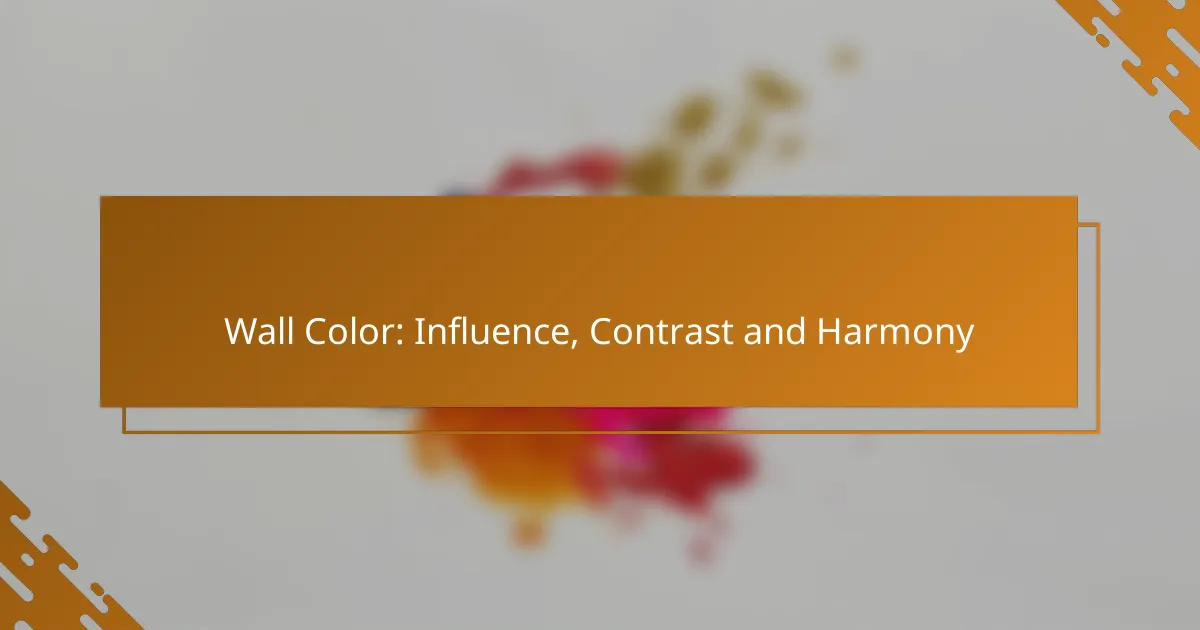Seasonal displays are a vibrant way to celebrate the changing times of the year, with themes that reflect the essence of each season. From the cozy charm of Autumn Harvest to the bright cheer of Spring Floral, these displays can be enhanced by thoughtful color choices and effective arrangement techniques that create visual harmony and evoke the desired mood.

What are the best seasonal display themes for 2023?
For 2023, the best seasonal display themes emphasize vibrant colors and engaging arrangements that resonate with the spirit of each season. Key themes include Winter Wonderland, Autumn Harvest, Spring Floral, Summer Beach, and Halloween Spooktacular, each offering unique elements to enhance your decor.
Winter Wonderland Theme
The Winter Wonderland theme captures the essence of a snowy landscape, featuring whites, blues, and silvers. Incorporate elements like faux snow, icicles, and twinkling lights to create a magical atmosphere.
Consider using white or silver ornaments, frosted branches, and soft textiles to enhance the theme. A well-placed snowman or a winter scene backdrop can add charm and depth to your display.
Autumn Harvest Theme
The Autumn Harvest theme celebrates the rich colors of fall, utilizing warm hues like oranges, browns, and deep reds. This theme can be brought to life with pumpkins, gourds, and autumn leaves.
Incorporate natural elements such as hay bales and corn stalks for an authentic touch. A centerpiece featuring a cornucopia filled with seasonal fruits can serve as a focal point, inviting warmth and abundance.
Spring Floral Theme
The Spring Floral theme is characterized by bright pastels and vibrant floral arrangements. This theme emphasizes renewal and growth, making it perfect for celebrating the season.
Utilize fresh flowers, floral wreaths, and pastel-colored decorations to create a lively atmosphere. Consider adding elements like butterflies or birds to enhance the theme’s connection to nature.
Summer Beach Theme
The Summer Beach theme evokes the relaxed vibe of coastal living, featuring colors like turquoise, sandy beige, and sunny yellow. Incorporate beach-related items such as seashells, starfish, and beach towels to create an inviting display.
Consider using a mix of textures, like wicker and linen, to mimic a beachside setting. A small sandcastle or beach umbrella can serve as playful accents that capture the essence of summer fun.
The Halloween Spooktacular theme embraces the fun and fright of the season, using colors like black, orange, and purple. Incorporate spooky elements such as jack-o’-lanterns, cobwebs, and skeletons to create an eerie atmosphere.
Use lighting strategically, such as flickering candles or colored lights, to enhance the mood. A well-decorated entryway with spooky signs and themed props can set the tone for Halloween festivities.

How to choose colors for seasonal displays?
Choosing colors for seasonal displays involves understanding the emotional impact of colors and aligning them with the theme of the season. Consider the mood you want to evoke and the cultural significance of colors during specific times of the year.
Color Psychology in Seasonal Displays
Color psychology plays a crucial role in how seasonal displays are perceived. Different colors can evoke specific emotions; for instance, warm colors like red and orange can create feelings of warmth and excitement, while cool colors like blue and green can promote calmness and relaxation. Understanding these associations helps in selecting colors that resonate with the intended audience.
When designing displays, consider the context of the season. For example, autumn may call for earthy tones like browns and deep oranges, while spring might benefit from pastels and bright colors that symbolize renewal and growth.
Trending Color Palettes for 2023
For 2023, popular color palettes include earthy tones, vibrant jewel colors, and soft pastels. Earthy palettes often feature shades like terracotta, olive green, and mustard yellow, reflecting a connection to nature. Jewel tones such as emerald, sapphire, and ruby add a touch of luxury and richness, making them ideal for festive displays.
Soft pastels remain a favorite, especially for spring displays, incorporating colors like lavender, blush pink, and mint green. These palettes can create a fresh and inviting atmosphere, appealing to a wide audience.
Seasonal Color Combinations
Effective seasonal displays often utilize specific color combinations to enhance visual appeal. For example, pairing deep reds with gold can create a classic holiday feel, while combining bright yellows with greens can evoke the energy of summer. Consider using complementary colors to create contrast and draw attention to key elements.
Another approach is to use monochromatic schemes, where variations of a single color are used to create depth and interest. This can be particularly effective in minimalist designs, allowing the subtle differences in shades to stand out.

What are effective arrangement techniques for displays?
Effective arrangement techniques for displays involve strategic placement and organization of elements to enhance visual appeal and communication. Key techniques include layering, creating focal points, and ensuring balance and symmetry in the overall design.
Layering Techniques
Layering techniques involve placing items at different depths to create a sense of dimension and interest. Start with a base layer, such as larger items or backdrops, and gradually add smaller elements in front to build depth. This approach can be particularly effective in seasonal displays, where varying heights and textures can evoke a specific mood.
When layering, consider using contrasting colors and materials to enhance visual separation. For example, a soft fabric backdrop can highlight shiny ornaments or vibrant flowers. Aim for a harmonious blend that draws the eye through the arrangement without overwhelming the viewer.
Focal Points in Arrangements
Establishing focal points is crucial for guiding the viewer’s attention within a display. A focal point can be a standout item, such as a large centerpiece or a unique decorative piece, strategically placed to draw the eye. This element should contrast with surrounding items to enhance its prominence.
To create effective focal points, consider using color, size, or texture to differentiate the key item from others. For instance, a bright red ornament can serve as a focal point in a display dominated by neutral tones. Ensure that the surrounding elements complement rather than compete with the focal point.
Balance and Symmetry
Balance and symmetry are essential for creating visually pleasing arrangements. Symmetrical designs, where elements are mirrored on either side of a central line, often evoke a sense of order and stability. This technique works well in formal displays, such as holiday table settings.
Alternatively, asymmetrical balance can create a more dynamic and casual feel. This involves distributing visual weight unevenly while maintaining overall harmony. For example, a large item on one side can be balanced by several smaller items on the opposite side. Experiment with both approaches to find the right fit for your seasonal theme.

What materials are best for seasonal displays?
The best materials for seasonal displays depend on the intended use, location, and desired aesthetic. Natural, eco-friendly, and durable outdoor materials are popular choices that can enhance the visual appeal while being practical for various weather conditions.
Natural Materials
Natural materials like wood, stone, and dried flowers create a warm and inviting atmosphere for seasonal displays. These elements can be sourced locally, reducing transportation costs and environmental impact. Consider using untreated wood for rustic charm or stones for a more earthy feel.
When using natural materials, ensure they are properly treated or preserved to withstand the elements if displayed outdoors. For example, sealing wood can protect it from moisture and pests, extending its lifespan.
Eco-Friendly Options
Eco-friendly materials, such as recycled plastics, bamboo, and organic fabrics, are increasingly popular for seasonal displays. These options minimize environmental impact and often come in vibrant colors and designs. Look for products labeled as biodegradable or made from post-consumer waste.
Incorporating eco-friendly materials not only supports sustainability but can also appeal to environmentally conscious consumers. For instance, using reclaimed wood for display structures can add character while promoting recycling efforts.
Durable Outdoor Materials
Durable outdoor materials like metal, treated wood, and high-density polyethylene are essential for seasonal displays exposed to the elements. These materials resist fading, rust, and decay, making them ideal for long-term use. Metal frames or decorations can provide a contemporary look while ensuring longevity.
When selecting durable materials, consider local climate conditions. For example, in areas with heavy snowfall, materials that can withstand weight and moisture are crucial. Always check for warranties or guarantees to ensure quality and durability over time.

How to incorporate lighting in seasonal displays?
Incorporating lighting into seasonal displays enhances visual appeal and sets the mood. Consider the type of lighting, its placement, and the overall theme to create a cohesive and inviting atmosphere.
String Lights for Ambiance
String lights are versatile and can be used to create a warm, inviting ambiance in any seasonal display. They can be draped over trees, wrapped around railings, or hung across outdoor spaces to add a festive touch.
When selecting string lights, consider the color temperature; warm white lights create a cozy feel, while cool white lights offer a more modern look. Aim for lengths that fit your space, typically ranging from 10 to 100 feet, depending on the area you want to illuminate.
Spotlights for Focus
Spotlights are ideal for highlighting specific features in your seasonal display, such as decorations or focal points. They can be positioned to draw attention to key elements, enhancing the overall design.
When using spotlights, choose adjustable models that allow you to change the angle and intensity. Consider using colored filters for seasonal themes; for instance, red and green for Christmas or orange and purple for Halloween. Ensure that the wattage is appropriate for the size of the area being illuminated.
LED Options for Energy Efficiency
LED lights are an excellent choice for seasonal displays due to their energy efficiency and longevity. They consume significantly less power than traditional incandescent bulbs, making them cost-effective for extended use.
When selecting LED options, look for those with a high lumen output for brightness and a low wattage rating. Many LED lights are now available in various colors and styles, allowing for creative displays without compromising energy use. Additionally, check for certifications like Energy Star to ensure quality and efficiency.

What are the costs associated with seasonal displays?
The costs associated with seasonal displays can vary significantly based on factors such as materials, design complexity, and installation. Typically, businesses can expect to spend anywhere from a few hundred to several thousand dollars, depending on the scale and intricacy of the display.
Materials and Supplies
Materials for seasonal displays can include lights, decorations, and structural components. Common choices are plastic, metal, and fabric, with costs ranging from low to high depending on quality and durability. For example, LED lights may cost more upfront but save on energy in the long run.
Design and Planning
Investing in professional design services can enhance the visual impact of seasonal displays. Design fees can range from a few hundred to several thousand dollars, depending on the designer’s experience and the complexity of the project. It’s essential to balance aesthetic appeal with budget constraints.
Installation and Maintenance
Installation costs can vary based on the size and location of the display. Hiring professionals may cost more, but it ensures safety and proper setup. Maintenance, including repairs and seasonal changes, should also be factored into the overall budget, as it can add up over time.
Permits and Regulations
Some locations may require permits for large displays, especially those involving electrical components or public spaces. Costs for permits can vary widely, so it’s crucial to check local regulations before proceeding. Failing to obtain necessary permits can lead to fines or removal of the display.



